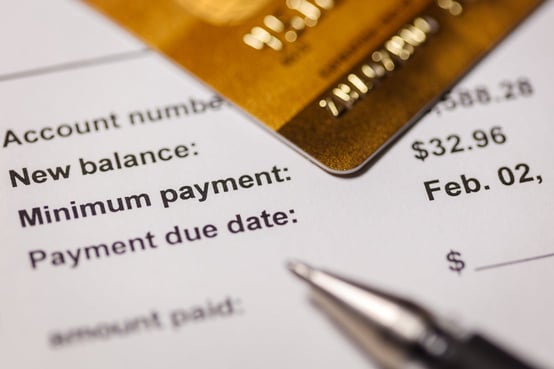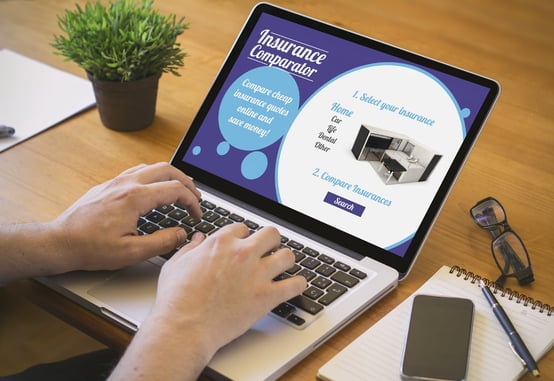

Holiday shopping is underway, and many shoppers are already bracing themselves for heavy spending, with some people even admitting that they’re planning to take on debt to afford this season.
According to the 2019 Holiday Spending Survey from Decluttr, a certified refurbished tech seller, 43% of Americans say they’re likely to go over budget on holiday spending, with a little over a quarter anticipating post-holiday debt.
Regardless of why you go into holiday debt, whether it’s due to careless spending or an unexpected travel expense that sent your budget soaring, one fact remains the same — the faster you pay off your credit card balance or balances, the less money you’ll waste on interest fees and the sooner you can enjoy a more flexible budget.
Since paying down debt can be an overwhelming process, here are six simple steps to help you create a successful debt repayment plan.
Step 1: Assess the Damage
It’s easy to ignore your credit card debt and pretend it doesn’t exist, but avoiding your financial issues will only make your situation more difficult to overcome — and more expensive. The sooner you deal with your debt, the quicker you will reach other financial goals, such as buying a home or getting married, or whatever it is you want to do in your life.
Begin by organizing your bank and credit card accounts to determine how much debt you have actually accumulated over the holidays.

Set up automatic withdrawals to ensure you never miss a payment.
Jot down the balance and interest rates for each account and automate at least the minimum due to ensure timely payments. You don’t want to get slapped with late fees — or worse, incur the extensive damage a single late payment can do to your credit score.
Step 2: Set Your Debt-Free Goal
The key to effective financial goal setting is being realistic about what you can accomplish, especially when it comes to paying off debt. When you set a big goal that you can’t reach, you’re likely to become frustrated and give up when the going gets tough.
To set a reasonable goal, do some simple math. For example, if you want to pay down a $3,000 credit card balance within six months, calculate how much you need to put toward it every month.
If such payments aren’t reasonable, adjust your goal and timeline. Visualizing what your life will feel like when you pay off that balance will also help you stick to your goal!
Step 3: Choose a Debt Pay-Off Strategy that Works for You
There are two types of debt repayment strategies that you can adopt.
The Snowball Method involves paying down the debt with the smallest balance first aggressively while only making the minimum payments on other balances, no matter the account interest rates. Once that debt is completely paid off, you move on to the next smallest balance, which creates a snowball effect.
The idea is that tackling smaller balances is easier to do and will help you experience a quick win to feel motivated. When you experience success, you’re more likely to keep working toward your end goal.

You can use the Snowball or the Avalanche Method to pay off debts.
However, this doesn’t always save you the most money on interest fees. If the latter is more important to you, then try the Avalanche Method.
This debt repayment plan focuses on paying down the debt with the highest interest rate first. Using an app like Debt Free will help you stay focused on your goal and will even help you compare debt repayment strategies to figure out which one works best for you.
Step 4: Consider Consolidation Options
When you’re carrying debt across multiple accounts, it can become increasingly hard to manage your balances and you may find yourself missing payment deadlines. In this case, consider debt consolidation, which makes it easier to manage your debt and helps you save on interest fees.
For instance, you may be eligible to transfer current credit card balances to a new card that offers a 0% APR for a promotional period of up to 18 months to cut out wasteful interest fees. Ideally, you work toward paying off your debt within the promotional period to take full advantage of the offer.
Other options include a home equity line of credit (HELOC) or a personal loan, both of which may offer lower interest rates compared to your current credit card. Spend time researching all your options to figure out which one works best for you.
When considering a personal loan, review the terms and potential fees so you don’t run into any surprises. There are plenty of no-fee options out there.
Step 5: Cut Discretionary Expenses
To meet your debt repayment goals, you need to free up funds to bolster payments as much as possible. This may require some tough love when it comes to your discretionary spending.
Spend some time reassessing your monthly bills to look for savings opportunities. First of all, are you paying for a recurring expense that you really don’t need or value, such as a beauty box subscription or gym membership?
In these cases, cancel these services to give yourself extra wiggle room in your budget for debt payments. Negotiating with service providers, such as your cable or internet companies, and comparing insurance rates for your car or home may help you turn up extra savings, all of which can be used to fast-track your debt repayment plan.

Compare insurance rates online to see if you can save money.
When it comes to all those luxury services — or anything you can do yourself — now is the time to scale back. This may include dog grooming, weekly car washes, and daily coffee fixes.
Remember, you can always add these services or expenses back to your budget after you pay off your debt and get a better handle on your budget.
Step 6: Replenish Your Budget
No matter how much you cut back, you may still find yourself struggling to pay down debt. In this case, you may need to add more cash flow to your monthly income.
If a raise or new job isn’t an option, consider a side hustle. There are plenty of ways to earn money on the side when you have free time, whether it’s dog walking or rideshare driving.
Otherwise, look around your home for items you can sell and put the extra cash toward your debts. For instance, you can sell your kid’s outgrown clothing, shoes, and accessories at thredUP.com or cash in on electronics at sites like Gazelle.com or NextWorth.
Advertiser Disclosure
BadCredit.org is a free online resource that offers valuable content and comparison services to users. To keep this resource 100% free for users, we receive advertising compensation from the financial products listed on this page. Along with key review factors, this compensation may impact how and where products appear on the page (including, for example, the order in which they appear). BadCredit.org does not include listings for all financial products.
Our Editorial Review Policy
Our site is committed to publishing independent, accurate content guided by strict editorial guidelines. Before articles and reviews are published on our site, they undergo a thorough review process performed by a team of independent editors and subject-matter experts to ensure the content’s accuracy, timeliness, and impartiality. Our editorial team is separate and independent of our site’s advertisers, and the opinions they express on our site are their own. To read more about our team members and their editorial backgrounds, please visit our site’s About page.




